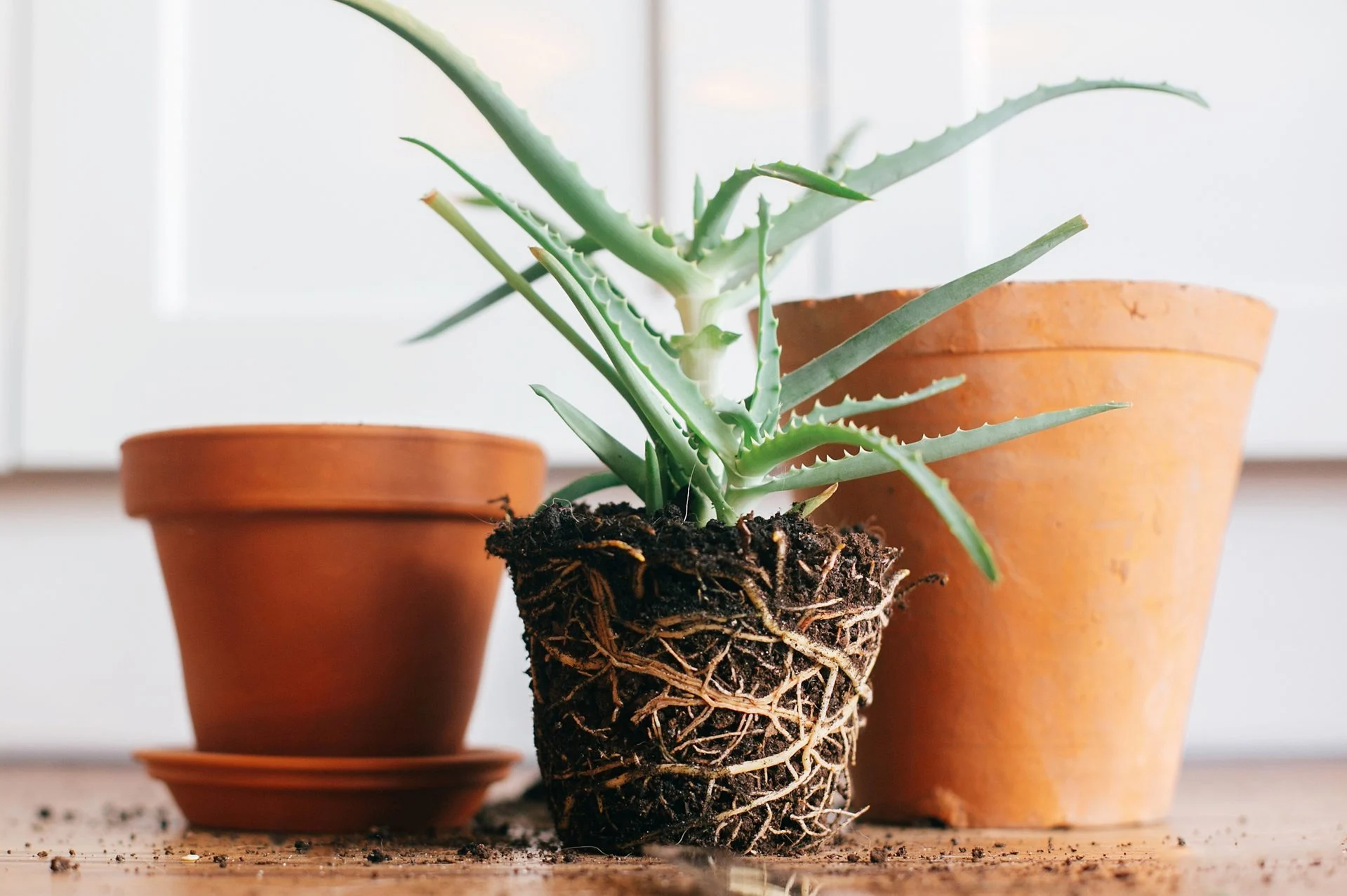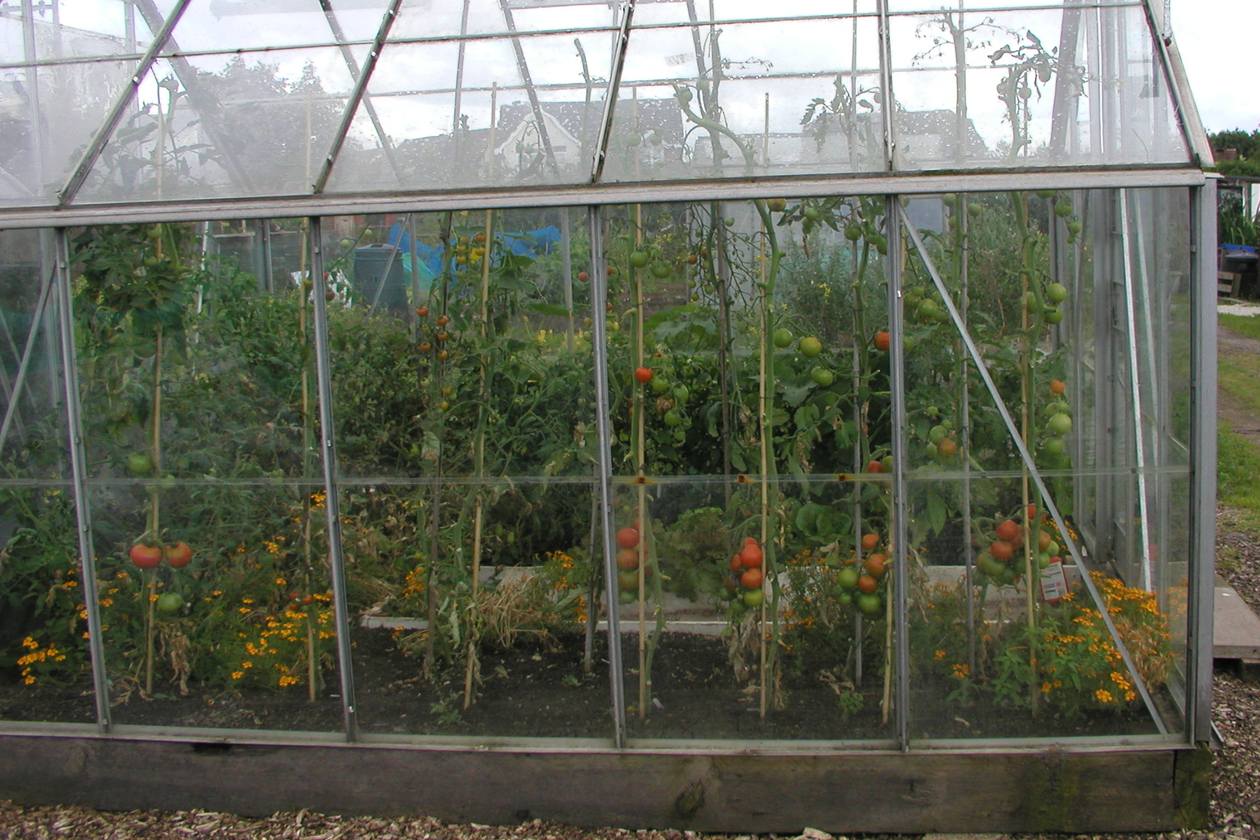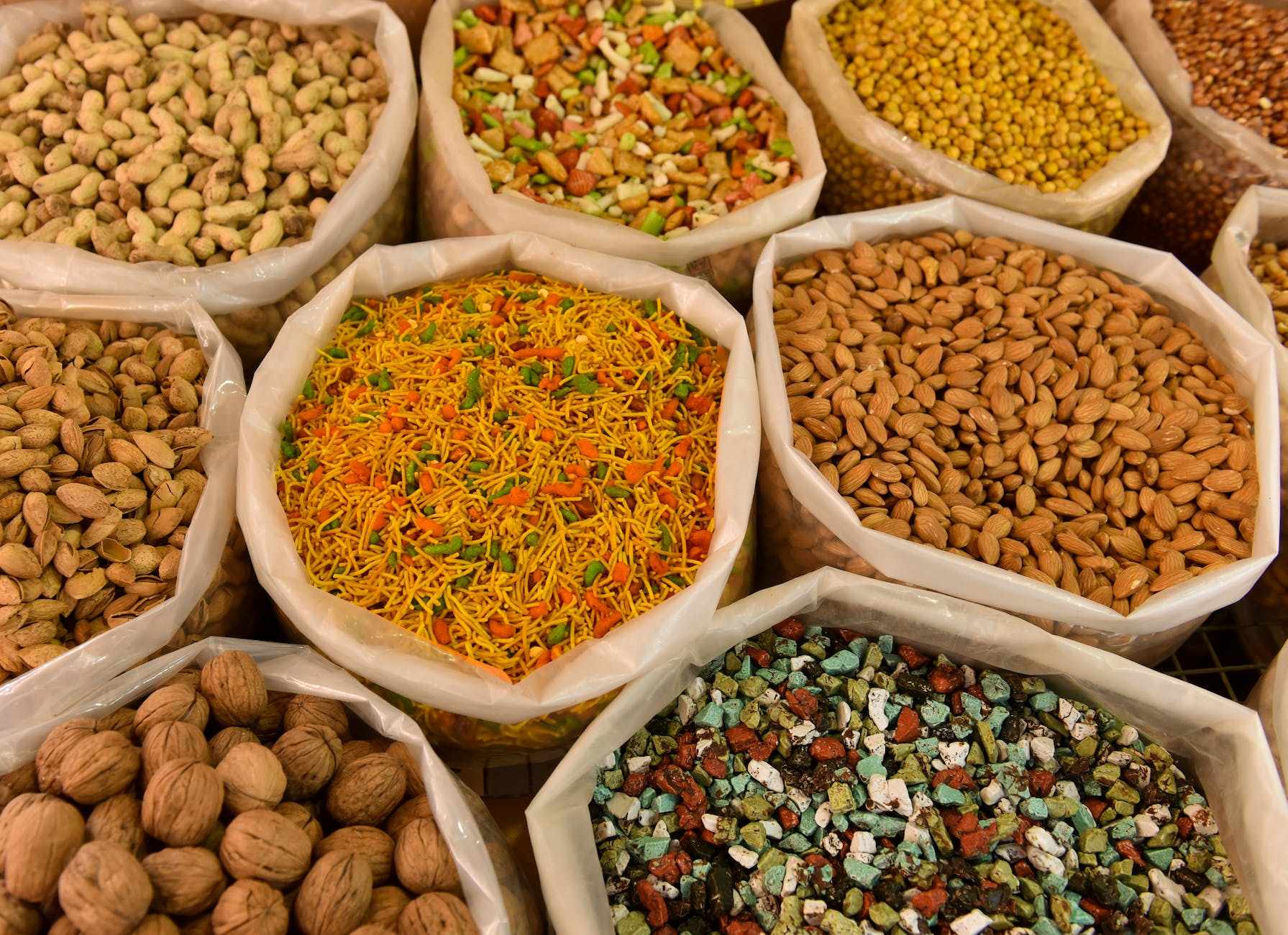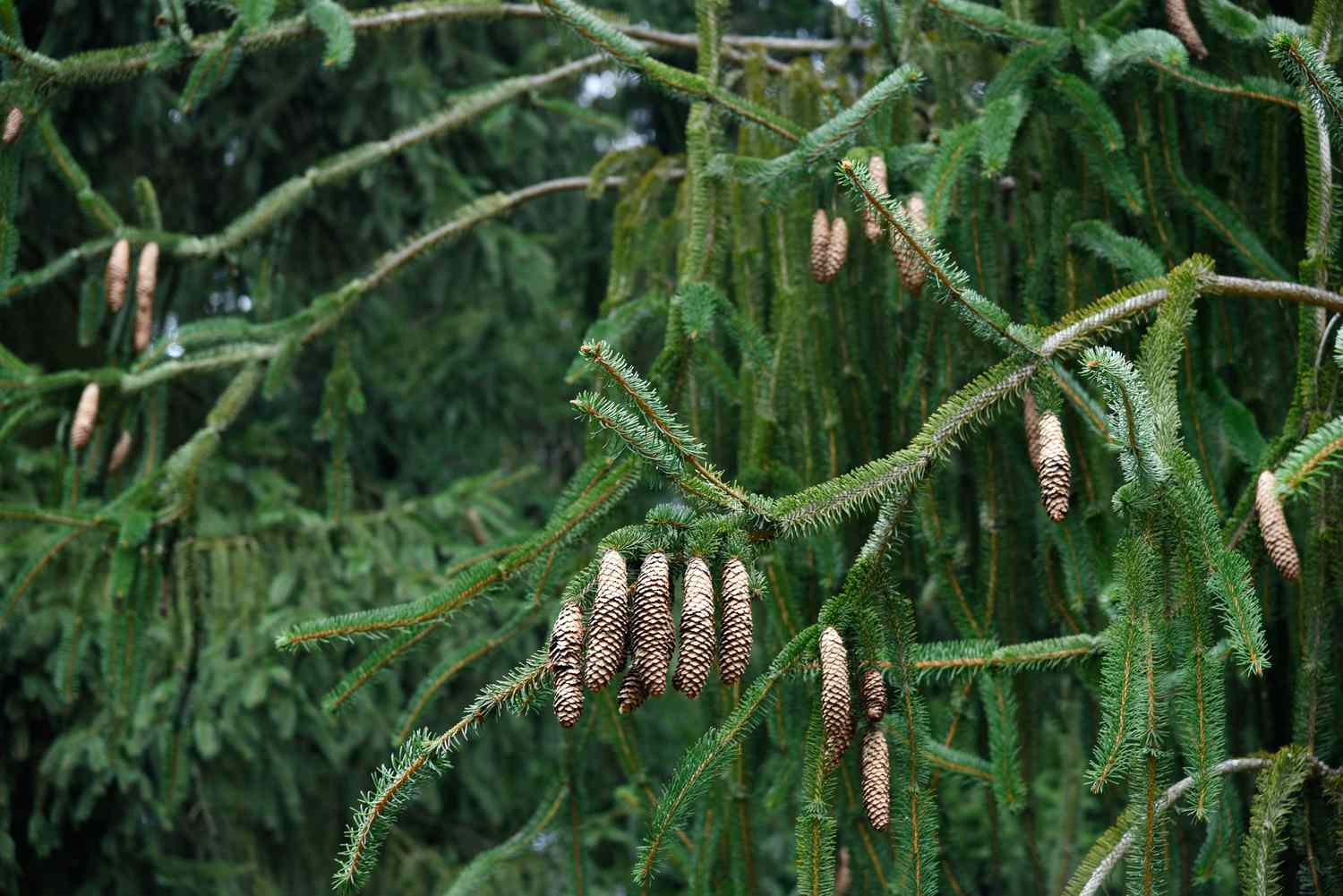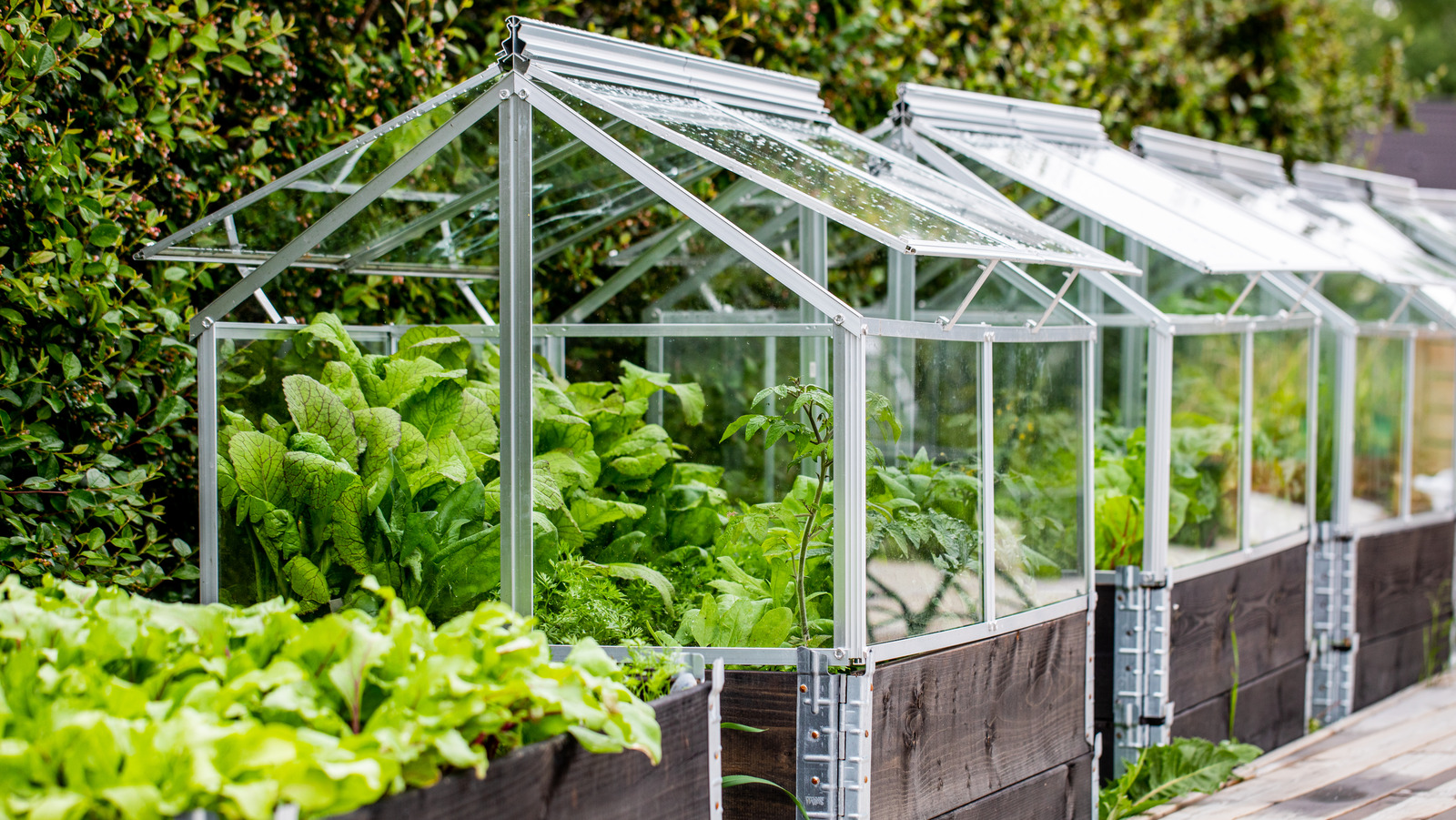Home>Gardening Techniques>How Long Can A Tomato Plant Live In A Greenhouse


Gardening Techniques
How Long Can A Tomato Plant Live In A Greenhouse
Modified: January 22, 2024
Discover the secrets of plant care for tomato plants in a greenhouse. Learn how to extend the lifespan of your tomato plants and ensure a thriving garden.
(Many of the links in this article redirect to a specific reviewed product. Your purchase of these products through affiliate links helps to generate commission for Chicagolandgardening.com, at no extra cost. Learn more)
Table of Contents
- Introduction
- Factors Affecting Tomato Plant Lifespan in a Greenhouse
- Optimal Growing Conditions for Tomato Plants in a Greenhouse
- Disease and Pest Management for Tomato Plants in a Greenhouse
- Pruning and Training Techniques for Tomato Plants in a Greenhouse
- Harvesting and Maintenance of Tomato Plants in a Greenhouse
- Extending the Lifespan of Tomato Plants in a Greenhouse
- Conclusion
Introduction
Welcome to the fascinating world of greenhouse gardening! If you’re a plant enthusiast looking to grow tomatoes, you’ve come to the right place. Tomatoes are one of the most popular and rewarding plants to grow in a greenhouse, offering a bountiful harvest of juicy, flavorful fruits. But how long can a tomato plant actually live in a greenhouse?
The lifespan of a tomato plant in a greenhouse can vary depending on several factors, including growing conditions, disease management, pruning techniques, and maintenance. With proper care and attention, you can extend the lifespan of your tomato plants and enjoy a continuous supply of fresh, homegrown tomatoes.
In this article, we will explore the various factors that can affect the lifespan of tomato plants in a greenhouse. We will delve into the optimal growing conditions, disease and pest management strategies, pruning and training techniques, as well as harvesting and maintenance practices. By understanding these key aspects, you will be equipped with the knowledge to maximize the lifespan of your tomato plants and ensure a successful greenhouse gardening experience.
So, buckle up and get ready to embark on this green-thumb adventure as we dive into the wonderful world of growing tomato plants in a greenhouse. We’ll guide you through the necessary steps to create a thriving environment for your tomatoes, help you overcome common challenges, and empower you to enjoy the fruits of your labor for as long as possible.
Factors Affecting Tomato Plant Lifespan in a Greenhouse
The lifespan of a tomato plant in a greenhouse can be influenced by several key factors. Understanding and managing these factors will play a crucial role in determining the longevity of your tomato plants. Let’s explore some of the most significant factors:
1. Environmental Conditions: The environment in your greenhouse has a direct impact on the lifespan of your tomato plants. Factors such as temperature, humidity, light, and ventilation should be carefully controlled. Tomatoes thrive in temperatures between 70-80°F (21-27°C) during the day and slightly cooler temperatures at night. High humidity can lead to fungal diseases, so ensure good air circulation and avoid overcrowding plants.
2. Watering and Irrigation: Proper watering techniques are paramount to the well-being of your tomato plants. Overwatering can lead to root rot and disease, while underwatering can cause stress and stunted growth. Maintain a consistent watering schedule, ensuring the soil is evenly moist but not waterlogged. Consider using drip irrigation or a soaker hose system to provide water directly to the root zone.
3. Soil Quality: The soil in your greenhouse should be rich in organic matter and well-draining. Tomatoes prefer a slightly acidic soil with a pH level of 6.0-6.8. Regularly monitor and amend the soil to maintain optimal nutrient levels for healthy plant growth.
4. Disease and Pest Management: Diseases and pests can significantly impact the lifespan of tomato plants. Implement an integrated pest management (IPM) approach, which includes regular monitoring, proper sanitation, and the use of organic pest control methods when necessary. Common diseases to watch out for include tomato blight, powdery mildew, and aphids.
5. Tomato Variety: The choice of tomato variety can also influence the lifespan of your plants. Some varieties are more resistant to diseases and adverse weather conditions. Consider selecting disease-resistant varieties to increase the chances of a longer lifespan.
6. Pruning and Training: Proper pruning and training techniques can promote healthier growth and extend the lifespan of your tomato plants. Prune off suckers (side shoots) and remove lower leaves to improve air circulation and prevent the spread of diseases. Use trellises or stakes for support and to keep the plants upright.
7. Nutrient Management: Providing adequate nutrients to your tomato plants is essential for their overall health and longevity. Use a balanced fertilizer specifically formulated for tomatoes and follow the recommended application rates. Regularly monitor the plants for signs of nutrient deficiencies and adjust the fertilization accordingly.
By paying attention to these factors and implementing appropriate measures, you can significantly extend the lifespan of your tomato plants in a greenhouse. Now that we have explored the factors, let’s dive deeper into the optimal growing conditions for tomato plants in a greenhouse.
Optimal Growing Conditions for Tomato Plants in a Greenhouse
Creating optimal growing conditions is key to ensuring the success and longevity of your tomato plants in a greenhouse. By providing the ideal environment, you can encourage healthy growth, abundant fruiting, and an extended lifespan for your plants. Let’s explore the key elements of optimal growing conditions:
1. Temperature: Tomatoes thrive in temperatures between 70-80°F (21-27°C) during the day and slightly cooler temperatures at night. Maintaining consistent temperatures within this range is crucial for optimal growth. Consider using a thermostat-controlled ventilation system or shading to regulate temperatures during hot summer months.
2. Light: Tomatoes are sun-seeking plants that require plenty of direct sunlight to produce fruit. Position your greenhouse in a location that receives maximum sunlight exposure throughout the day. Supplemental lighting may be necessary in areas with limited natural light, particularly during winter months or in regions with shorter daylight hours.
3. Humidity: While tomatoes require moderate humidity, excessive moisture in the air can lead to fungal diseases. Aim for a relative humidity level of around 50-70%. Good air circulation is essential to prevent humidity buildup, so consider using fans or vents to maintain proper airflow within the greenhouse.
4. Ventilation: Adequate ventilation is vital for a healthy greenhouse environment. It helps regulate temperature, humidity, and carbon dioxide levels while preventing the buildup of stagnant air and reducing the risk of disease. Install vents, louvers, or fans to facilitate proper air exchange within the greenhouse.
5. Watering and Irrigation: Consistent and appropriate watering is crucial for the health of your tomato plants. Water at the base of the plants to prevent foliage from getting wet, as wet leaves can encourage the development of diseases. Consider using drip irrigation or a soaker hose system to provide water directly to the root zone, ensuring the soil remains evenly moist but not waterlogged.
6. Soil Quality: The soil in your greenhouse should be well-draining, rich in organic matter, and provide essential nutrients for the plants. Use a high-quality potting mix or prepare a greenhouse-specific soil blend that is tailored for tomatoes. Regularly monitor soil moisture levels and pH, and amend the soil as needed to maintain optimal conditions.
7. Fertilization: Provide your tomato plants with a balanced fertilizer specifically formulated for tomatoes. Follow the recommended application rates, and consider using organic fertilizers to promote healthy growth. Monitor the plants for signs of nutrient deficiencies, such as yellowing leaves or stunted growth, and adjust the fertilization accordingly.
By creating these optimal growing conditions, you can create an environment where your tomato plants can thrive and reach their full potential. Next, we will delve into effective disease and pest management techniques to protect your tomato plants in a greenhouse.
Disease and Pest Management for Tomato Plants in a Greenhouse
Protecting your tomato plants from diseases and pests is essential for their overall health and longevity in a greenhouse. The controlled environment of a greenhouse can provide some level of protection, but proper disease and pest management practices are still necessary. Let’s explore effective strategies for disease and pest management:
1. Regular Monitoring: Regularly inspect your tomato plants for any signs of disease or pest infestation. Look for yellowing or wilting leaves, spots, discoloration, or unusual growth patterns. Early detection allows for prompt intervention and minimizes the risk of spreading.
2. Proper Sanitation: Maintain cleanliness in your greenhouse to prevent the buildup of disease-causing pathogens and pests. Clean up fallen leaves, debris, and any diseased plant material. Disinfect tools, pots, and trays with a mild bleach solution before reusing them.
3. Integrated Pest Management (IPM): Implement an IPM approach that combines various strategies to manage pests effectively. This approach includes cultural practices, such as proper plant spacing and crop rotation, as well as biological controls and the selective use of organic pesticides when necessary.
4. Beneficial Insects: Introduce beneficial insects, such as ladybugs, lacewings, and predatory mites, into your greenhouse. These natural predators help control common pests like aphids, whiteflies, and spider mites, reducing the need for chemical treatments.
5. Organic Pest Control: Utilize organic pest control methods, such as neem oil or insecticidal soap, to target specific pests while minimizing harm to beneficial insects and the environment. Follow the instructions carefully and apply treatments during the early stages of infestation.
6. Disease-Resistant Varieties: Select disease-resistant tomato varieties that are less susceptible to common diseases in your region. Look for varieties labeled with resistance to common pathogens like tomato blight or fusarium wilt.
7. Proper Air Circulation: Ensure good air circulation within the greenhouse to prevent the buildup of moisture and reduce the risk of fungal diseases. Use fans or open vents to promote airflow and discourage the growth of pathogens.
8. Crop Rotation: Practice crop rotation by avoiding planting tomatoes in the same greenhouse bed or container each season. This helps disrupt disease cycles and reduce the buildup of soil-borne pathogens that can affect your tomato plants.
Implementing these disease and pest management strategies will significantly reduce the risk of diseases and pests compromising the lifespan of your tomato plants in a greenhouse. Now, let’s explore pruning and training techniques to promote healthier growth and maximize their potential.
Pruning and Training Techniques for Tomato Plants in a Greenhouse
Pruning and training tomato plants in a greenhouse not only promotes healthier growth but also improves air circulation, reduces the risk of diseases, and enhances fruit production. These techniques help maximize the potential of your tomato plants and extend their lifespan. Let’s explore some effective pruning and training techniques:
1. Suckering: Suckering involves removing the “suckers” or side shoots that emerge from the leaf axils of tomato plants. These suckers compete for nutrients and can lead to overcrowding, reduced air circulation, and increased susceptibility to diseases. Pinch off the suckers when they are small and easy to remove.
2. Removing Lower Leaves: As the tomato plant grows, remove the lower leaves that touch the ground. These leaves are more prone to diseases and pests. Pruning allows for better air circulation and reduces the risk of soil-borne diseases splashing onto the foliage.
3. Staking: Staking involves providing support to the tomato plants to keep them upright and prevent damage and breakage, especially when heavy with fruit. Use stakes or larger cages to support the plants. Tie the stems gently to the stakes using soft twine or plant clips, ensuring not to constrict their growth.
4. Training to a Single Stem: If you prefer a more managed and compact tomato plant, consider training your plants to a single stem. This method, known as “singly-stemmed” or “indeterminate” training, involves removing all suckers and allowing only the main stem to grow. This practice helps channel the plant’s energy toward fruit production and facilitates easier maintenance.
5. Pruning Indeterminate Varieties: For indeterminate tomato varieties (those that continue to grow and produce fruit throughout the season), prune the top portion of the plant once it reaches the desired height. This helps redirect energy into the existing fruit and encourages larger, more flavorful tomatoes.
6. Pruning Determinate Varieties: Determinate tomato varieties (those that reach a specific height and produce fruit within a shorter period) require less pruning. Focus on removing the suckers and lower leaves to improve airflow and reduce the risk of diseases.
7. Tomatoes in Containers: If you are growing tomatoes in containers, consider using small cages or trellises to provide support. Prune and train the plants as they grow, ensuring they have enough space to develop and preventing overcrowding.
Remember, pruning and training techniques may differ depending on the tomato variety and your specific goals. It’s essential to understand the growth habits and requirements of the tomato plants you are growing in your greenhouse.
By employing strategic pruning and training techniques, you can optimize the growth and productivity of your tomato plants, enhance disease resistance, and prolong their lifespan. Next, let’s explore the importance of proper harvesting and maintenance practices for tomato plants in a greenhouse.
Harvesting and Maintenance of Tomato Plants in a Greenhouse
Proper harvesting and maintenance practices are vital for ensuring the longevity and productivity of your tomato plants in a greenhouse. From knowing when to harvest to providing ongoing care, these practices play a crucial role in maximizing your tomato plant’s lifespan. Let’s delve into the importance of harvesting and maintenance:
1. Harvesting: Harvesting tomatoes at the right time is key to enjoying their peak flavor and quality. Tomatoes should be fully colored, firm, and have a slight give when gently squeezed. Harvest ripe tomatoes carefully to avoid bruising or damaging the plant. Regularly check the vines for ripe fruit and harvest them promptly to encourage continuous production.
2. Pruning and Maintenance: Ongoing maintenance is essential for the health and productivity of tomato plants. Continue to remove suckers, trim diseased or yellowing leaves, and provide support for the plants as they grow. Regularly check for signs of pests or diseases and take prompt action to prevent their spread.
3. Watering and Fertilization: Maintain a consistent watering schedule, ensuring the soil remains evenly moist. Adjust the frequency and amount of water based on the plant’s needs and the environmental conditions. Additionally, regularly fertilize your tomato plants with a balanced fertilizer formulated for tomatoes to provide essential nutrients for healthy growth and fruit production.
4. Pollination: In a greenhouse setting, tomatoes may require assistance with pollination since natural pollinators may not have easy access. Gently shake the tomato plants or use a small brush to transfer pollen from one flower to another. This helps ensure proper fruit set and development.
5. Disease Monitoring and Prevention: Regularly inspect your tomato plants for signs of diseases, such as wilting, spots, or mold. If you notice any issues, take immediate action to control and prevent the spread of diseases. Consider using organic fungicides or disease-resistant varieties to mitigate the risk of infections.
6. Temperature and Ventilation: Monitor the temperature inside your greenhouse and maintain proper ventilation to ensure the comfort and health of your tomato plants. Excessive heat or humidity can lead to stress, lower fruit quality, and increased disease risk. Use shade cloth, fans, or vents to regulate the temperature and maintain optimal airflow.
7. Harvest Cleanup: After the harvest season, clean up your greenhouse by removing plant debris, fallen fruit, and any diseased material. Disinfect the greenhouse to reduce the risk of overwintering pests or pathogens.
By implementing these harvesting and maintenance practices, you can extend the lifespan of your tomato plants, promote continuous fruit production, and minimize the risk of diseases or pests affecting your greenhouse crop. Now, let’s explore ways to further extend the lifespan of your tomato plants in a greenhouse.
Extending the Lifespan of Tomato Plants in a Greenhouse
The lifespan of tomato plants in a greenhouse can be extended by implementing certain strategies and practices. By taking proactive steps, you can ensure the continued health, productivity, and longevity of your tomato plants. Here are some effective ways to extend the lifespan of your tomato plants in a greenhouse:
1. Crop Rotation: Avoid planting tomatoes in the same greenhouse bed or container year after year. Crop rotation helps break the cycle of diseases and pests that can build up in the soil, extending the lifespan of your tomato plants.
2. Soil Solarization: Before planting new tomato crops, consider performing soil solarization in the greenhouse. This technique involves covering moist soil with plastic sheets to heat it up using the sun’s energy. This process helps kill disease-causing organisms and weed seeds, improving the overall health of the soil.
3. Mulching: Apply a layer of organic mulch, such as straw or wood chips, around the base of your tomato plants. Mulching helps regulate soil temperature, conserve moisture, suppress weed growth, and prevent soil-borne diseases from splashing onto the foliage.
4. Regular Pruning and Training: Continuously prune and train your tomato plants to maintain proper airflow, reduce disease risk, and promote better fruiting. Regular pruning helps remove diseased or damaged foliage and encourages the plant’s energy to focus on fruit production, extending its lifespan.
5. Provide Nutrient-Rich Soil: Ensure that your tomato plants have access to nutrient-rich soil by regularly adding organic matter or compost to improve soil fertility. Adequate nutrition helps sustain plant health and prolong their lifespan.
6. Proper Watering: Avoid overwatering your tomato plants, as this can lead to root diseases and stunted growth. Instead, provide consistent irrigation by watering deeply and allowing the soil to dry slightly between watering sessions. Proper watering practices help prevent stress and promote healthy growth.
7. Monitor and Address Pest and Disease Issues: Regularly inspect your tomato plants for signs of pests or diseases. Implement integrated pest management techniques, such as using beneficial insects or organic pest control methods, to mitigate issues promptly and prevent them from affecting the lifespan of your plants.
8. Prune Grafted Tomato Plants: If you are growing grafted tomato plants, pay special attention to the pruning of the rootstock. The rootstock is typically more vigorous and can potentially overtake the scion if not pruned properly. Regularly monitor the growth of the rootstock and remove any unwanted shoots to maintain the balance between the rootstock and scion.
9. Monitor and Adjust Environmental Conditions: Continuously monitor and adjust the environmental conditions in your greenhouse. Regularly measure temperature, humidity, and light levels to ensure they fall within the optimum range for your tomato plants. Making appropriate adjustments will promote better growth and extend their lifespan.
By following these practices, you can greatly extend the lifespan of your tomato plants in a greenhouse. Enjoy the satisfaction of harvesting delicious, homegrown tomatoes for an extended period while maximizing the potential of your greenhouse garden.
Conclusion
Congratulations! You have now gained valuable insights into extending the lifespan of your tomato plants in a greenhouse. By understanding the factors that affect their longevity, optimizing growing conditions, implementing effective disease and pest management strategies, practicing proper pruning and training techniques, and following appropriate harvesting and maintenance practices, you can create an environment that promotes healthy growth, abundant fruit production, and an extended lifespan for your tomatoes.
Remember to ensure optimal environmental conditions such as temperature, light, humidity, and ventilation. Provide consistent and appropriate watering, maintain high-quality soil, and fertilize your plants as needed. Regularly monitor for pest and disease issues, using integrated pest management techniques and natural predators whenever possible.
When it comes to pruning and training, remove suckers, lower leaves, and provide proper support to keep your plants upright. Stay attentive to harvesting ripe tomatoes at the right time and conduct ongoing maintenance to promote plant health and productivity.
Through these efforts, you can enjoy a more prolonged and fruitful greenhouse gardening experience, with a continuous supply of delicious, homegrown tomatoes throughout the season. Experiment with different varieties, techniques, and environmental adjustments to find what works best for your specific greenhouse setup and growing conditions.
So, get your green thumb ready and embark on this rewarding journey of growing tomato plants in a greenhouse. With dedication, knowledge, and a little bit of experimentation, you’ll have a flourishing tomato garden that brings you joy and an abundant harvest year after year. Happy gardening!
